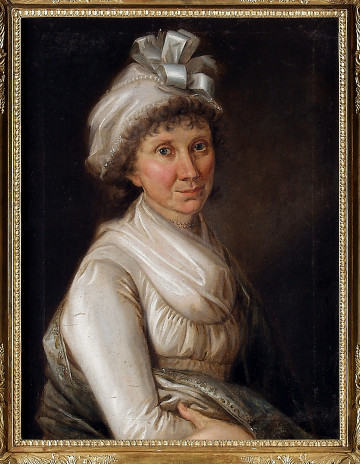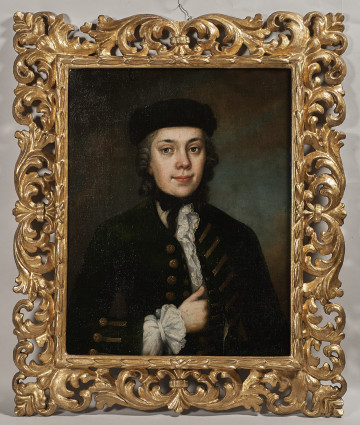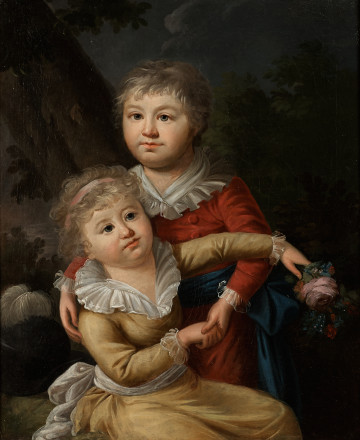
Portrait of Aleksandra Potocka, née Lubomirska
2nd half of the 19th century
Castle Museum in Łańcut
Part of the collection: European classics of modernity
Since the Middle Ages German and Danish descriptions of West Slavic towns have been written: Retry (Radogoszcz), Arkona, Gardźec, Julin (Wolin) and Szczecin, whose central elements were supposed to be wooden temples housing colossal statues with several heads or faces. The most important one was located at Cape Arkona, serving the cult of Swantewit (Świętowit) - the Swabian god of war and harvest, identified with Rugiewit (Rujewit) as well as the Russian Perun and Baltic Perkun. The overthrow of the Arkona statue by order of Bishop Absalon of Roskilde in 1168 marked the symbolic end of paganism in this part of Europe. At the end of the 19th century, texts by ancient chroniclers, Saxo Grammaticus or Helmold, inspired many artists. In 1894 the Copenhagen academic Laurits Tuxen created a painting depicting the capture of Arkona by Christian rulers. The painting was intended to decorate the 'Danish Versailles', the National History Museum at Frederiksborg Castle, and from the beginning of the 20th century the composition was given international recognition by reproduction prints illustrating scientific and completely popularised texts. The same theme later returned in the works of Franz Müller-Münster and Alfons Mucha. In 1921, the German archaeologist Carl Schuchhardt published the results of his research on the remains of the rampart of the Jaromar stronghold on Arkona, which he mistakenly considered to be the foundation of the Svantewitnesses' chram and statue. Tuxen's death was mourned at the end of 1927, when the Provincial Museum of Pomeranian Antiquities was announced, and the painter Max Kühn returned from Rügen with several paintings. Among them, acquired by the Szczecin institution, was a depiction of a golden-lit cliff overlooked by the green turf of an archaeological site. A path on a steep chalk wall leads to it from the beach, which is bathed in dark blue sea water.
Szymon Piotr Kubiak
Author / creator
Dimensions
cały obiekt: height: 64 cm, width: 97 cm
Object type
painting
Creation time / dating
Creation / finding place
Identification number
Location / status

2nd half of the 19th century
Castle Museum in Łańcut

3. ćwierć XVIII wieku
Castle Museum in Łańcut

1. ćwierć XIX wieku
Castle Museum in Łańcut
DISCOVER this TOPIC
Museum of King Jan III's Palace at Wilanów
DISCOVER this PATH
Educational path